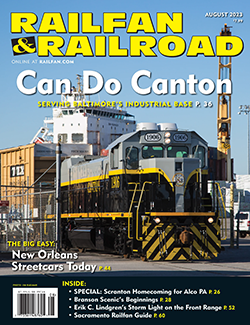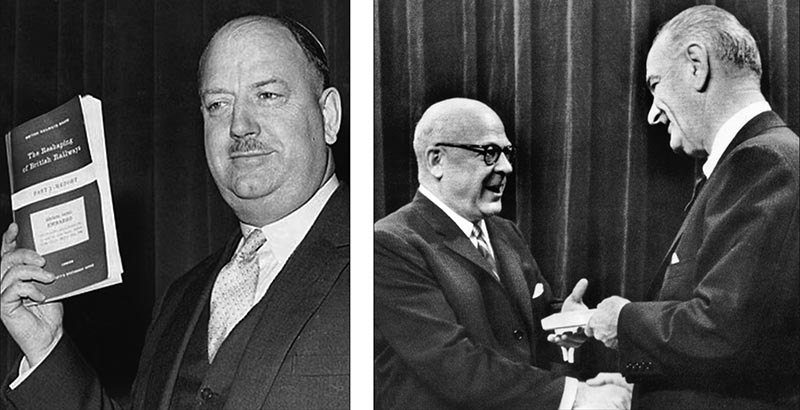 Updated October 9, 2023, to reflect that Dr. Richard Beeching had a Ph.D in Physics, not a medical degree as the column originally stated.
Updated October 9, 2023, to reflect that Dr. Richard Beeching had a Ph.D in Physics, not a medical degree as the column originally stated.
The railway world can be an insular one, peopled by figures who are famous within the industry, but relatively obscure among the general public. Most readers of this magazine, for example, probably recognize the names E. Hunter Harrison, Mike Haverty, or Rob Krebs. Say those names to someone who isn’t a railfan or a railroader, though, and you’ll likely receive a blank stare in return. Are the important figures of the railways, past and present, doomed to ignominy?
If we turn to the United Kingdom, the answer is most definitely “no.” Consider the case of Dr. Richard Beeching. Wander about the countryside of England, Wales, or Scotland, and mention this name. The odds are high that whoever you speak to will not only know this man’s name but have very strong opinions about him.
Some context is necessary. In the postwar years, Britain’s rail network was in bad shape, laden with old equipment, duplicative trackage, and poorly maintained services. The government’s response was to nationalize and form British Railways in 1948. The hope was that centralized control would reduce costs and rationalize services. Good in theory, less so in practice, as numerous attempts to modernize met with few financial returns.
To fix this, the British government formed a committee to study the future of rail transport, and appointed Beeching as one of its members. A Ph.D physicist, Beeching took a leave of absence from Imperial Chemical Industries where he was an executive to head the committee. Beeching pressed for a dramatic pruning of the U.K.’s railway network, arguing for efficiency to rule above all else. Known colloquially as “the Beeching Report,” his 1963 recommendations called for the abandonment of nearly one-third of the network, noting that these lines carried less than half of one percent of all passengers. While not every cut that Beeching suggested came to pass, many did, and the BR map shrank dramatically as a result. He is still remembered — without fondness — throughout Britain today, not just by fans or railway employees, but by the public at large who lost those services (mostly in rural areas).
Can anyone in the past or present of North American railroading compare? In much of the country, James J. Hill or Edward Harriman might be a part of popular memory. Here in California, maybe Theodore Judah or Leland Stanford would count — Stanford getting an edge by a term as governor and through founding a university named for his son. Nationally, though? It doesn’t seem so.
Maybe it’s not a fair comparison. North America is just bigger and with its population spread out across the continent. And in the U.S., railways became less relevant to the average American’s life throughout the postwar period. While this antipathy has abated somewhat, the echo of that turn away from the railways remains. For better or worse, we all know who Henry Ford and Elon Musk are, but names like Stuart Saunders and Patrick McGinnis have almost no impact on our collective culture, let alone their misdeeds that damaged an industry for decades to come. As the old saying goes, those who don’t know their history are doomed to repeat it.
—Alexander Benjamin Craghead is a transportation historian, photographer, artist, and author.



